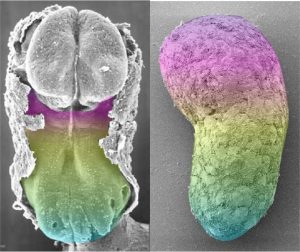This article is designed for individuals with a keen interest in biotechnology, genetics, and scientific advancements. Readers who want to stay updated on the latest breakthroughs in human reproduction technologies and their implications will benefit from this content. The article explores recent advancements in creating human embryo replicas and delves into the research and analysis behind these innovations.
Introduction: Pushing the Boundaries of Reproduction
In a world where scientific progress reshapes the boundaries of human potential, experts like Jennifer Doudna have taken center stage. Jennifer Doudna, a renowned biochemist celebrated for her groundbreaking work on the CRISPR-Cas9 gene-editing technology, has propelled us closer to understanding and manipulating the very fabric of life. As we journey into the realms of human embryo replicas, Doudna’s expertise serves as a guiding light, illuminating the path towards unprecedented advancements in reproduction.
The Evolution of Reproduction Technology
From the early days of in vitro fertilization (IVF) to the revolutionary breakthroughs in embryo development, the field of reproduction technology has undergone an astonishing evolution. IVF marked a pivotal moment, allowing couples struggling with infertility to conceive outside the confines of the human body. This landmark achievement paved the way for a cascade of scientific exploration, propelling us towards the creation of human embryo replicas.

Unveiling Human Embryo Replicas: A New Frontier
At the forefront of innovation lies the cutting-edge technique of creating human embryo replicas. This intricate process involves advanced cellular reprogramming and tissue engineering, melding the worlds of biology and engineering. Scientists are employing this novel approach not only to understand the intricate dance of early human development but also to explore potential therapeutic applications.
By coaxing pluripotent stem cells to develop into structures resembling early embryos, researchers gain insights into the complex choreography of cell differentiation. This newfound understanding holds promise for regenerative medicine, offering a potential solution for conditions that arise due to faulty embryogenesis.
However, the applications extend beyond regenerative medicine. Studying embryo replicas grants us an unparalleled window into the early stages of human development, shedding light on the origins of congenital disorders and offering avenues for preventive interventions. This vantage point provides scientists with a playground for experimentation that was once ethically out of reach.
Ethical Considerations and Future Implications
Every scientific leap carries with it a responsibility to address ethical concerns. The creation of human embryo replicas is no exception. As we venture deeper into the realms of cellular manipulation and embryo-like structures, questions about personhood and the boundaries of experimentation inevitably arise.
Jennifer Doudna’s work in gene editing accentuates these dilemmas. The same technology that enables precise modification of genes can also be perceived as meddling with the essence of life itself. The line between discovery and playing god becomes increasingly blurry, compelling us to confront the ethical quandaries head-on.
Beyond the philosophical quandaries, the implications of embryo replicas ripple through society and medicine. Possibilities of creating personalized drug testing platforms and refining the safety assessment of potential teratogens emerge. However, as we march towards a future where embryos can be artificially cultured for longer durations, grappling with the potential for sentient-like experiences within these structures becomes an imperative.
Conclusion: Bridging Science and Society
In the realm of scientific discovery, knowledge is both a beacon and a burden. The advancements in human embryo replicas stand as a testament to our insatiable curiosity and audacious innovation. Jennifer Doudna’s legacy intertwines with this pursuit, her expertise a driving force behind the breakthroughs.
As we look to the horizon, the convergence of science and society becomes ever more critical. The journey into the intricacies of human life challenges us not only to push the boundaries of our understanding but also to define the boundaries of our actions. With Jennifer Doudna’s footsteps as our guide, we venture into a future where the marvels of science are balanced by the wisdom of ethics.




